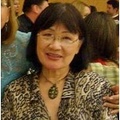Desde los tiempos inmemoriales, remontando al génesis de la creación humana, según la concepción occidental subraya a los primeros hombres sobre la tierra a: Adán y Eva, en ella está explícita la condición inferior de la mujer con respecto al hombre. ¿Habría sido este el plan divino de tal manera que el hombre sea el amo y señor de la tierra y es el que rige los destinos del mundo? Eva, como dice el libro sagrado ha sido creada de la costilla de Adán para establecer la dependencia y que debe estar supeditada a él, como marido. Esa trayectoria histórica o tal vez mitológica se había difundido en toda la civilización occidental, cuya convicción abarca inclusive entre las mujeres Nikkei que ha sido criado y educado en el continente americano.
Sin embargo, existe una intrahistoria de la creación que es diferente a la versión original, no develada entre las documentaciones pertinentes, tal vez fue ocultada por una lógica de la conveniencia de los ideólogos o teólogos ancestrales, tejido sobre la base del devenir de la historia de la humanidad y, dio lugar la hegemonía al varón.
La otra historia consiste en la existencia de una mujer llamada Lilith, antes de Eva que había sido creada por Dios del mismo barro que Adán, a ambos les infundió vida vivieron en el paraíso terrenal. El creador había ordenado a que Lilith, como mujer se sometiera a su marido, y este a su vez exigió que acatara la disposición divina. Lilith, lejos de ser una mujer obediente, había transgredido al mandato diciendo que ella también tendría los mismos privilegios que Adán, por lo que los dos habían sido creados del mismo material en el mismo día y exigió la igualdad de derecho como seres humanos e inclusivo manifestó que le gustaría tener la misma sabiduría que el creador. Lilith al comprobar la imposibilidad de alcanzar sus aspiraciones y su derecho como mujer, prefirió salir del paraíso y se pedió en las tinieblas, algunos teólogos la consideró como una mujer diabólica situando la en el lado oscuro de la vida. Y Dios creó conveniente darle una nueva compañía a Adán y creó a Eva
De esta manera; el modelo de mujer personificaba en la figura de Eva, inclusive su perversión en seducir al hombre para que cometiera faltas. El pecado de Eva es como un estigma que trae el ser humano con el pecado original.
Aun cuando este cuestionamiento religioso y cultural no estan dada en otras religiones sobre todo en las creencias orientales, es importante la trascendecia que diera la figura de Eva que “la mujer debe esta sometida al hombre y supeditada a él durante toda su vida” La misión de la mujer era el de ser doméstica y reproductora, es decir casarse, formar un hogar y educar a sus hijos para lo cual no se necesita estudios superiores ni carreras profesionales ni mucho menos conocer sus derechos como mujer. Es interesante observar de qué manera esta conciencia universal cubrió la superficie terrenal de tal manera que inclusive perdía su propio apellido como el caso japonés y usaba el se su marido, y la usanza americana era de poner Mrs. David Taylor y en América Latina, Maria de Llanes como si el “de” dependiera de su marido
Para que esta modalidad impregnada desde la medula tanto del varón como el de la mujer no fueron tareas fáciles de modificar cultural y políticamente. Fueron tantas las luchas de unas pocas mujeres de tratar de conquistar los derechos para las mujeres. En el siglo XVIII, Olympie de Gauges, quien por publicó “la Declaración de los derechos de la mujer y de la ciudadanía” fue enviada a la guillotina Eleanor Roosevelt en el seno de las Naciones Unidas cambió el “derecho del hombre” por “derechos humanos” para que en ese contexto haya reciprocidad entre mujeres y hombres y, muchas otras luchadoras habían trabajado para la conquista de sus derechos. Ya en el siglo XX empezaron con la cumbres mundiales de la mujeres en la búsqueda de la igualdad de los derechos, poco a poco se fueron reconociendo las tareas de las activistas y las inquietudes de las generalidad de las mujeres de la orbe.
En cuanto a las mujeres japonesas, eran bastante cotizadas por las características de “ser sumisa, de mirada baja, dócil y hacendosa.” Todavía en la segunda mitad de los años novecientos decían los hombres del jet set internacional. “La mayor felicidad del hombre es tener una esposa japonesa, el sueldo americano, vivir en Paris y tener una amante francesa.” Esto era una especie de cosificación del ser femenino.
Veremos a las mujeres Nikkei y sus madres quienes llegaron a las Americas, ellas no siempre vivían en óptimas condiciones. Muchas llegaban como yobiyose (compromiso por fotografía) en donde cada uno de los candidatos enviaban fotos y se producía el encuentro recién en el puerto de desembarque. El encuentro varias veces lejos de ser cordial, era inesperado y en ocasiones traumáticos. Prácticamente estas mujeres aceptaban su sino estoicamente como un deber y trataban de construir familias ejemplares en las nuevas tierras. Cuyos descendientes se siente orgullosos de sus abuelos que juntos lucharon para el bienestar de sus hogares.
Es importante resaltar, las virtudes de las mujeres japonesas de luchar al lado del hombre, muchas trabajaban en el campo a la par que su pareja durante todo el proceso de cultivo y la cosecha, la fabricación de alimentos caseros y a su vez las tareas del hogar y la crianza de sus hijos. Cada una sostenía un abanico de tareas, la multiplicidad de asignaciones quizás le deparaba una sintonía de entusiasmo aun cuando todo ello era rutinario.
La mujer japonesa era y sigue siendo el sostén de su pareja. Inclusive muchas de ellas abandonan su profesión para dedicarse a la casa. Era muy común la frase, “Detrás de cada hombre exitoso existe una mujer” y era como un deber sostener y apoyar para que el otro triunfe y esto a su vez, redundaba beneficios a toda la familia y, ellas tendrían que sacrificarse y mantener siempre en segundo plano, siguiendo la rutina diaria. Y ese ritmo de vida sigue practicando hasta el presente en casi todos los hogares nikkei.
La mayoría de los hombres Nikkei en el Paraguay prefieren casarse con otra nikkei, tal vez porque estas conservan la cultura tradicional de la mujer japonesa. La sumisión se ha vuelto relativa y ellas gozan de cierta independencia en sus actividades y están surgiendo verdaderas líderes y profesionales competentes.
Estamos en el siglo XXI, por Dios. Mujeres despierten se es nuestra era y, busquemos el logro como mujeres que somos. Caminemos al lado del hombre y no detrás. Están surgiendo mujeres valiosas y meritorias en el mundo y resurjamos la figura de Lilith como un símbolo de lucha por la igualdad de género y de dignidad como mujer.
© 2007 Emi Kasamatsu





